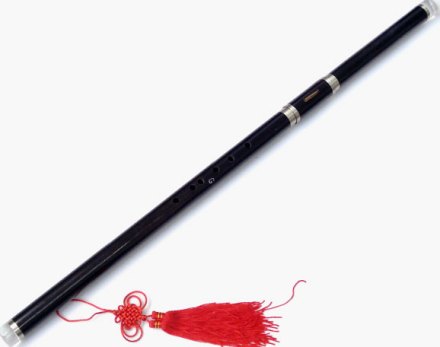How to play Bau
The Bau is a very ethnic musical instrument. It is often used to play lyrical and broad tones, and it can also play highly skilled cadenza pieces. When playing in ensemble, the sound of Bau is easy to blend with other instruments. Bau consists of a tube body and a reed. Tube body made of bamboo. The Hani people mostly use green bamboo. Due to the mild and humid local climate, they generally do not crack and deform. After slow drying, the bamboo skin turns white.
Bawu is made of bamboo tube with eight press holes (seven in the front and one in the back), and a tongue-shaped copper reed is installed at the mouthpiece. When playing, the upper end is blown horizontally, and the vibrating reed is sounded. Bau has a lower volume and a narrower range, but has a soft tone, and is often used to accompany dances, solos, etc.

When playing, the tube body is thick and the elder is blowing horizontally, and the thin and short one is vertical. The vertical blowing mouth contains reeds, and the reeds are placed between the two lips when blowing horizontally. The index finger, middle finger and ring finger of the right hand respectively press the upper three holes of the two tubes horizontally, and the index finger, middle finger and ring finger of the left hand respectively press the lower three holes of the two tubes horizontally. The hole is pronounced, the airflow vibrates the reed and excites the air column in the tube to resonate, and it is played by the tonality method. There are techniques such as glissando, beating, vibrato, erasure, arpeggio, flying fingers, etc., and long-duration notes can be played by the cyclic ventilation method.
Flatten the edges around the blow hole and stick a copper thorn reed with beeswax. The size of the blowing hole depends on the size of the spring frame, generally it should be slightly smaller than the spring frame. In order to protect the reed tongue, two thin bamboo sticks are often set on both sides of the reed frame, leaving only a gap as a blow hole. There are also thin bamboo strips woven into a movable ring to protect the reed tongue, which is removed when playing. There are eight (seven in the front and one in the back) circular sound holes on the tube. When blowing horizontally, the sound hole and the blow hole are not in a straight line, but at a 45-degree angle. There are also Bau at the end with a tail hole.
Reeds are an important part of Bawu. Bamboo reeds were first used by the people, and later they were improved to be made of brass (62 or 68 musical instrument copper), or alloy copper, phosphor bronze or shell copper. The thickness of the copper reed is particularly important, it should not exceed 0.03 cm, and the thicker one must be thinned by hammer forging. Cut the copper sheet into a rectangular blank with a length of 2.5 cm and a width of 0.8 cm, and then use a sharp sharp knife on it - carve a sharp triangular spring tongue. The size of the reed tongue depends on the height. Taking F as an example, the tongue is 1.7 cm long and the base of the tongue is 0.25 cm wide. After carving, the reed tongue is flattened, and the bottom surface is polished with water sandpaper to remove burrs, and then lift the tip of the tongue to make it The height is about 0.15 cm, so that the gap between the reed tongue and the yellow frame is small, and the free vibration is smooth.
The tuning of the reed is the most critical. The reed tongue is thicker at the root and thinner at the middle and tip. It should be mounted on the bawu while scraping it for audition. It is better to have high sensitivity, beautiful timbre, and coordinated pronunciation of each hole. The reed itself has a pitch, and the pitches of the reeds used by different pitched Bau are also different. Usually it should be a raised lower fifth, such as Bau in F, and the reed should sound B sharp. The pitch of the reed is allowed to have a small second-degree swimming range. If the sound of the reed is raised to the lower fourth, the position of the fundamental sound hole should be wrongly placed or the nozzle should be used to make the hair and closing sensitive and bright. Bau and Sheng are both musical instruments with reeds, but the reeds are different. Sheng has one sound per tube and one reed, and the reed tongue is rectangular; Bawu has nine notes per tube and one reed, and the reed tongue is sharply triangular and the tip of the tongue is raised. Although they can vibrate freely, the timbre is fundamentally different. If the Bau is replaced with an empty reed, it will not emit a thick and soft timbre.
 渝公网安备 50010702504639号
渝公网安备 50010702504639号